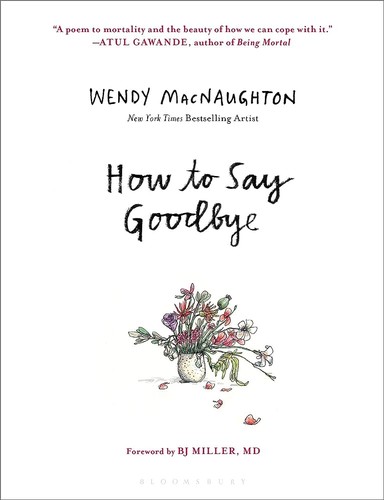How to Say Goodbye, a poignant and deeply moving illustrated guide by Wendy MacNaughton, published in 2023, isn’t your typical self-help book. Instead, it’s a compassionate exploration of the universal experience of loss, rendered through MacNaughton’s signature blend of hand-drawn illustrations and heartfelt prose. MacNaughton, an acclaimed artist and New York Times bestselling author, brings her unique sensitivity to a topic many find difficult to navigate. Her background in visual storytelling adds a crucial layer of emotional accessibility, making this a book that resonates far beyond the printed word. In a world often obsessed with constant forward momentum, How to Say Goodbye offers a necessary pause, reminding us of the importance of acknowledging and processing the inevitable goodbyes that shape our lives. The book’s timing, given the past few years of shared and individual grief, is particularly relevant. Find it here.
Content Overview
MacNaughton’s work doesn’t present a rigid roadmap for grief, but rather a collection of gentle prompts and observations that encourage reflection. The book is structured around different kinds of goodbyes – to people, places, things, and even phases of life – making it a comprehensive guide to navigating loss in its various forms. It’s not about finding closure but about finding ways to honor what was and to integrate those experiences into the ongoing narrative of our lives. The pages are filled with sketches of everyday objects, people, and scenes that evoke a sense of familiarity and warmth, reinforcing the idea that grief is an intrinsic part of human existence. The book is definitely targeted towards those facing any type of loss, and I believe that everyone, regardless of their experience, would find comfort and valuable insights within its pages.
Practical Application
The real strength of How to Say Goodbye lies in its practical applications. It doesn’t offer a list of steps but rather prompts readers to engage actively with their own experiences. Through exercises like drawing memories or writing letters to those they’ve lost, the book encourages a tactile and deeply personal approach to processing grief. It’s about creating space for feelings and honoring the unique ways individuals cope. For example, one of the suggested exercises is to draw an object associated with the person you are grieving. This activity helps in re-engaging with memories in a tangible way. MacNaughton’s approach allows for a natural, organic process of grieving, making it less about “moving on” and more about “moving through”. Click here to purchase.
Research & Authority
While How to Say Goodbye isn’t a scholarly work rooted in academic research, its authority comes from MacNaughton’s deep empathy and her extensive experience in human observation. She draws on personal experiences and those of others she’s encountered, presenting a diverse tapestry of how people navigate loss. The book relies on authentic emotional resonance rather than scientific data, which is a departure from traditional self-help books. Her ability to articulate complex feelings through simple illustrations and prose gives the book its strength, making it feel like a compassionate conversation with a wise friend rather than a clinical study. MacNaughton’s focus on the human element elevates this work, providing a fresh perspective on loss.
Writing Style & Narrative Techniques
MacNaughton’s prose is both concise and evocative, managing to convey profound emotions with a deceptive simplicity. Her hand-drawn illustrations are as much a part of the narrative as the text, adding a layer of intimacy and warmth to the experience. The pacing is gentle and reflective, allowing readers to pause and process their own emotions. There isn’t a traditional narrative arc; instead, the book flows as a series of connected reflections, each resonating with the theme of loss. The author’s voice is incredibly inviting and non-judgemental, creating a safe space for readers to explore their own grief. The combination of visuals and text allows for a multi-sensory experience of grief, which is incredibly powerful.
I remember when I was younger, my grandmother gave me a small, smooth stone she’d picked up from the beach. I carried it around for years, a tangible link to her and our shared summers. Reading How to Say Goodbye made me realize that these seemingly small objects hold significant emotional weight, a concept MacNaughton captures perfectly. It’s this ability to find meaning in the ordinary that makes the book so impactful.
Conclusion
How to Say Goodbye is more than just a book; it’s a companion for navigating the complex terrain of loss. It’s not about finding the right words or actions, but about acknowledging the experience of grief with compassion. The book’s lasting impact lies in its ability to normalize grief and to offer practical ways to engage with our memories and feelings. I believe this book matters because it reminds us that goodbyes are not endings, but rather integral parts of the human experience that deserve to be honored. It’s a beautifully crafted and deeply moving book that deserves a place on every bookshelf. Click here to get your copy today.
I would highly recommend How to Say Goodbye to anyone who has ever experienced loss, regardless of the nature of that loss. It would be particularly helpful for those who are seeking a compassionate and non-prescriptive approach to grief. For readers who appreciate illustrated works that blend art and emotion, this book is a must-have. Readers who enjoyed The Grief Handbook by Bridget McNulty or When Things Fall Apart by Pema Chödrön may also find How to Say Goodbye to be incredibly comforting and helpful. Ultimately, Wendy MacNaughton has created a work that is as beautiful as it is necessary, and a testament to the power of vulnerability and shared humanity.

